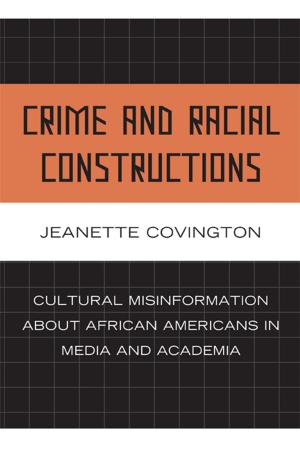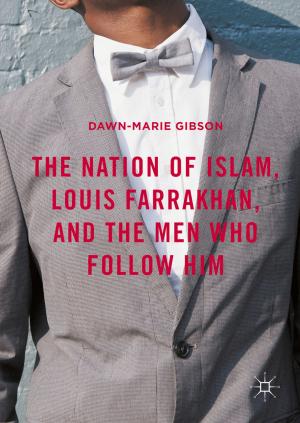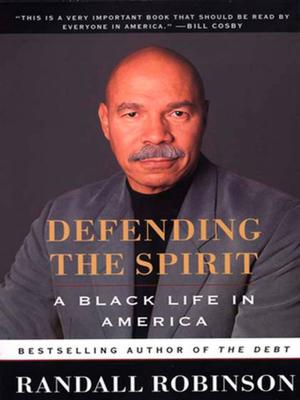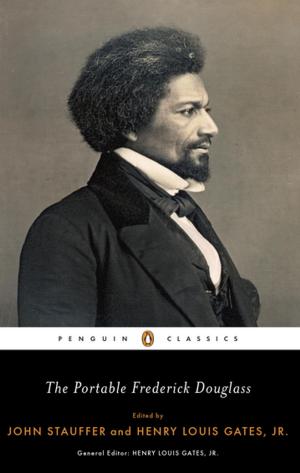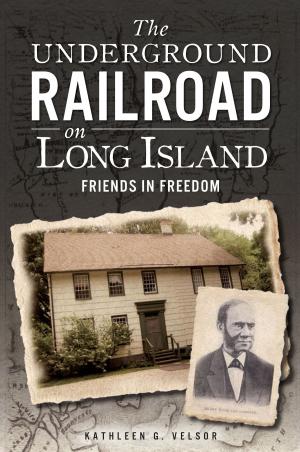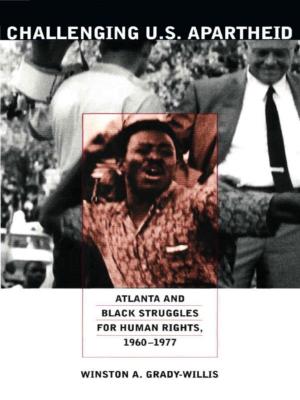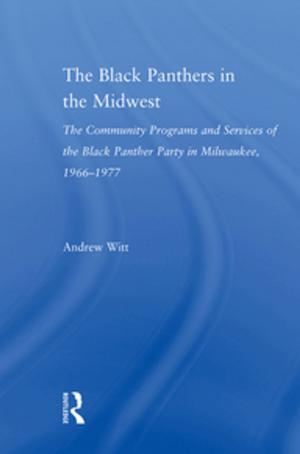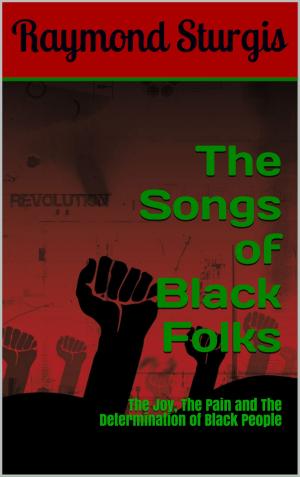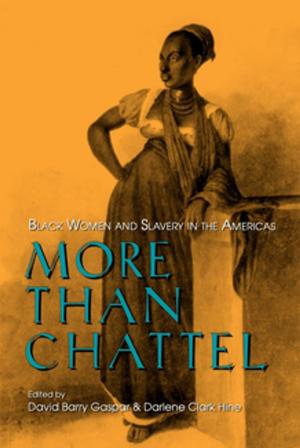The National Urban League, 100 Years of Empowering Communities
Ruth Standish Baldwin and George Edmund Haynes, 1950-1980
Nonfiction, Social & Cultural Studies, Social Science, Cultural Studies, African-American Studies| Author: | Anne Nixon, Kay Horsch | ISBN: | 9780985871154 |
| Publisher: | National Human Services Assembly | Publication: | May 27, 2013 |
| Imprint: | Language: | English |
| Author: | Anne Nixon, Kay Horsch |
| ISBN: | 9780985871154 |
| Publisher: | National Human Services Assembly |
| Publication: | May 27, 2013 |
| Imprint: | |
| Language: | English |
Ruth Standish Baldwin came from a family of early New England colonists with a history of social activism. The Baldwins were deeply concerned about the poor and disadvantaged. The health and welfare of Negro migrants were their particular interest. Mr. Baldwin, William Henry Baldwin, Jr., was an active participant in civic commissions and social agencies and had many ties to the Negro community. He belonged to a group of New York civic leaders and reformers known as the Committee of Fifteen. In 1896, this group formed the Committee for Improving the Industrial Conditions of Negroes in New York (CIICNNY). Mrs. Baldwin shared her husband’s dedication and social awareness. She was active in the National League for the Protection of Colored Women (NLPCW) — an organization formed to help protect Negro women new to Northern cities. When William Baldwin died in 1905, Ruth Standish Baldwin committed herself to continuing their work. George Edmund Haynes, unlike Ruth Standish Baldwin, did not come from a background of privilege. His father was a laborer, and his mother was a domestic servant with great ambitions for her son. When George Haynes completed his elementary education, the family moved from his birthplace in Pine Bluff, Arkansas to the more cosmopolitan community of Hot Springs. At a point in history when educational opportunities for Negroes ranged from limited to nonexistent, George Haynes’ achievements were astonishing. He received his bachelor’s degree from Nashville, Tennessee’s Fisk University and then a master’s degree from Yale. Because he was an outstanding student, Yale awarded him an academic scholarship, and he waited tables and stoked furnaces for his room and board. His varied and distinguished career began immediately after the Yale years. His first job was with the Colored Men’s Department of the International YMCA, where his visits to Negro colleges and universities broadened his horizons. But his academic studies continued, and he added to his reputation as a brilliant scholar, the distinction of being the first Negro to receive a PhD. degree from Columbia University. Dr. Haynes was a man of many talents with an extraordinary number of professional commitments. In addition to the National Urban League, he also founded and directed the Department of Social Science at Fisk University. At Fisk, his students trained at the Bethlehem Training Center that he had established as part of the Social Science Department. As part of their training, they did field work in existing agencies, and many were assigned to local affiliates of the National Urban League. This model program was repeated at the University of Pittsburgh, Columbia University, and New York University. Together, Ruth Standish Baldwin and George Haynes founded the Committee on Urban Conditions among Negroes (CUCAN). Within a year, three organizations — the Committee for Improving Industrial Conditions of Negroes in New York (CIICNNY), the National League for the Protection of Colored Women (NLPCW), and CUCAN — merged to form the National League on Urban Conditions among Negroes (NLUCAN). George Edmund Haynes became the Executive Secretary in 1910 and served in this capacity until 1918. Ruth Standish Baldwin served as President, Board of Trustees from 1913 to 1915. To date, there have been eight Presidents (previously known as Executive Secretaries) of the National Urban League, including George Edmund Haynes.
Ruth Standish Baldwin came from a family of early New England colonists with a history of social activism. The Baldwins were deeply concerned about the poor and disadvantaged. The health and welfare of Negro migrants were their particular interest. Mr. Baldwin, William Henry Baldwin, Jr., was an active participant in civic commissions and social agencies and had many ties to the Negro community. He belonged to a group of New York civic leaders and reformers known as the Committee of Fifteen. In 1896, this group formed the Committee for Improving the Industrial Conditions of Negroes in New York (CIICNNY). Mrs. Baldwin shared her husband’s dedication and social awareness. She was active in the National League for the Protection of Colored Women (NLPCW) — an organization formed to help protect Negro women new to Northern cities. When William Baldwin died in 1905, Ruth Standish Baldwin committed herself to continuing their work. George Edmund Haynes, unlike Ruth Standish Baldwin, did not come from a background of privilege. His father was a laborer, and his mother was a domestic servant with great ambitions for her son. When George Haynes completed his elementary education, the family moved from his birthplace in Pine Bluff, Arkansas to the more cosmopolitan community of Hot Springs. At a point in history when educational opportunities for Negroes ranged from limited to nonexistent, George Haynes’ achievements were astonishing. He received his bachelor’s degree from Nashville, Tennessee’s Fisk University and then a master’s degree from Yale. Because he was an outstanding student, Yale awarded him an academic scholarship, and he waited tables and stoked furnaces for his room and board. His varied and distinguished career began immediately after the Yale years. His first job was with the Colored Men’s Department of the International YMCA, where his visits to Negro colleges and universities broadened his horizons. But his academic studies continued, and he added to his reputation as a brilliant scholar, the distinction of being the first Negro to receive a PhD. degree from Columbia University. Dr. Haynes was a man of many talents with an extraordinary number of professional commitments. In addition to the National Urban League, he also founded and directed the Department of Social Science at Fisk University. At Fisk, his students trained at the Bethlehem Training Center that he had established as part of the Social Science Department. As part of their training, they did field work in existing agencies, and many were assigned to local affiliates of the National Urban League. This model program was repeated at the University of Pittsburgh, Columbia University, and New York University. Together, Ruth Standish Baldwin and George Haynes founded the Committee on Urban Conditions among Negroes (CUCAN). Within a year, three organizations — the Committee for Improving Industrial Conditions of Negroes in New York (CIICNNY), the National League for the Protection of Colored Women (NLPCW), and CUCAN — merged to form the National League on Urban Conditions among Negroes (NLUCAN). George Edmund Haynes became the Executive Secretary in 1910 and served in this capacity until 1918. Ruth Standish Baldwin served as President, Board of Trustees from 1913 to 1915. To date, there have been eight Presidents (previously known as Executive Secretaries) of the National Urban League, including George Edmund Haynes.



